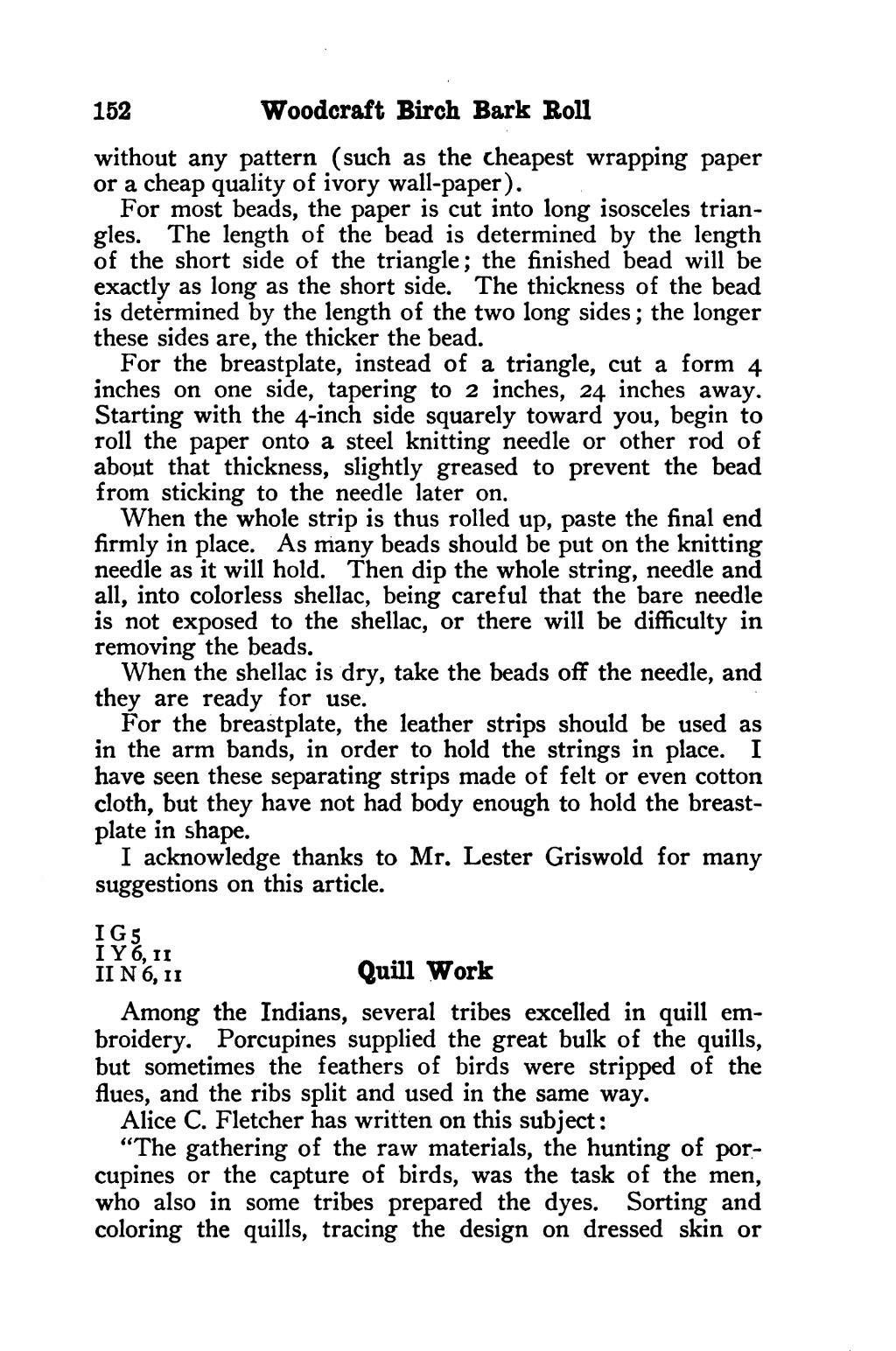152 Woodcraft Birch Bark Roll without any pattern (such as the cheapest wrapping paper or a cheap quality of ivory wall-paper ). | For most beads, the paper is cut into long isosceles trian- gles. The length of the bead is determined by the length of the short side of the triangle; the finished bead will be exactly as long as the short side. The thickness of the bead is determined by the length of the two long sides; the longer these sides are, the thicker the bead. For the breastplate, instead of a triangle, cut a form 4 inches on one side, tapering to 2 inches, 24 inches away. Starting with the 4-inch side squarely toward you, begin to roll the paper onto a steel knitting needle or other rod of about that thickness, slightly greased to prevent the bead from sticking to the needle later on. When the whole strip is thus rolled up, paste the final end firmly in place. As many beads should be put on the knitting needle as it will hold. Then dip the whole string, needle and all, into colorless shellac, being careful that the bare needle is not exposed to the shellac, or there will be difficulty in removing the beads. When the shellac is dry, take the beads off the needle, and they are ready for use. For the breastplate, the leather strips should be used as in the arm bands, in order to hold the strings in place. I have seen these separating strips made of felt or even cotton cloth, but they have not had body enough to hold the breast- plate in shape. I acknowledge thanks to Mr. Lester Griswold for many suggestions on this article. ive II . II N6, 11 Quill Work Among the Indians, several tribes excelled in quill em- broidery. Porcupines supplied the great bulk of the quills, but sometimes the feathers of birds were stripped of the flues, and the ribs split and used in the same way. Alice C. Fletcher has written on this subject: “The gathering of the raw materials, the hunting of por- cupines or the capture of birds, was the task of the men, who also in some tribes prepared the dyes. Sorting and coloring the quills, tracing the design on dressed skin or
Stránka:roll 1931.djvu/168
Z thewoodcraft.org
Tato stránka nebyla zkontrolována
